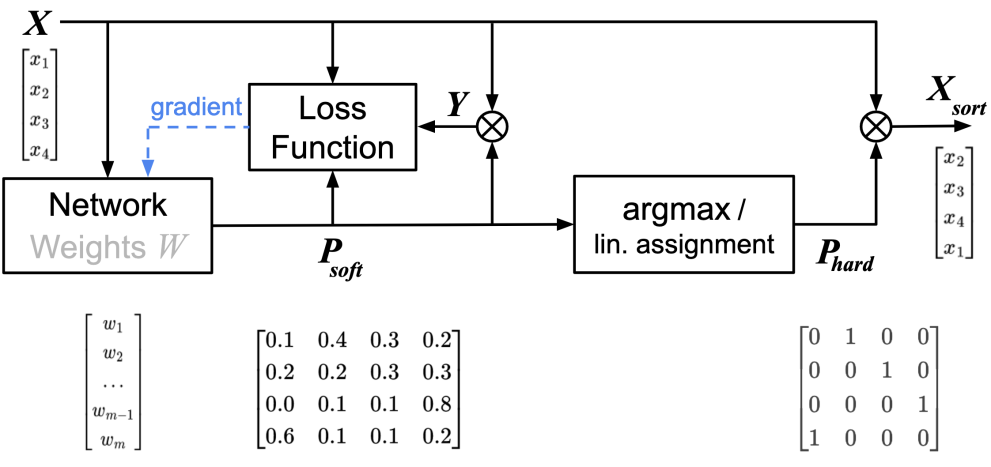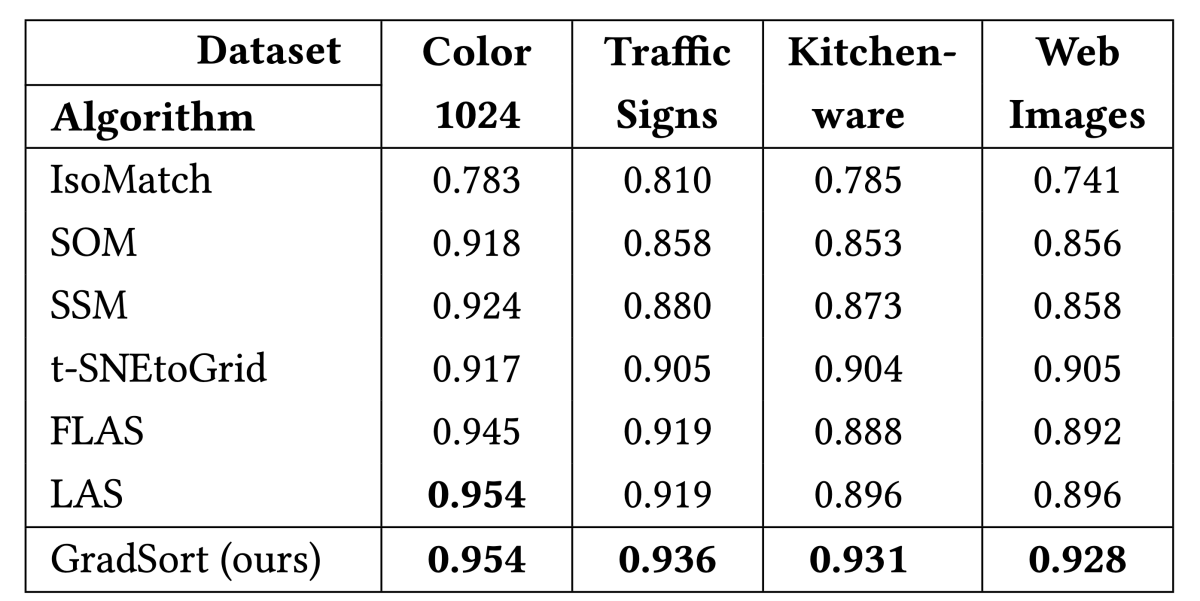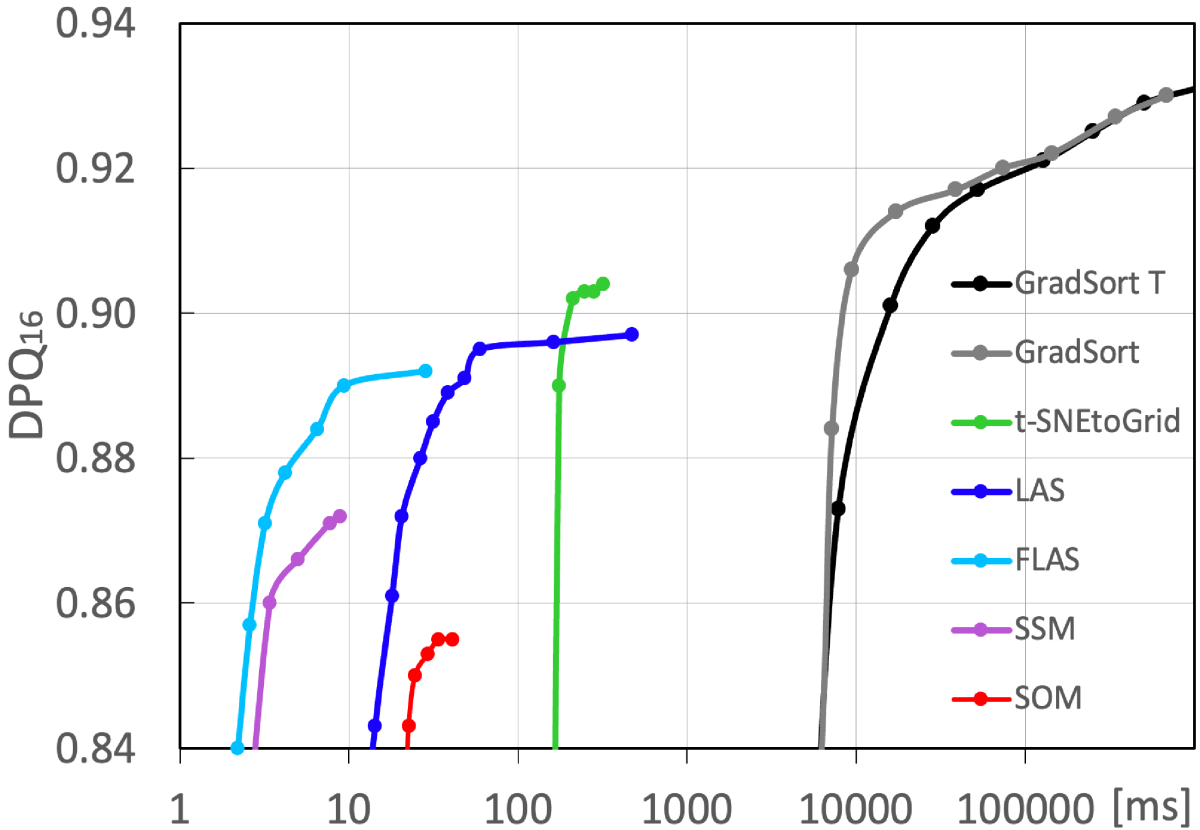Creating Sorted Grid Layouts with Gradient-based Optimization
1 Visual Computing Group @ HTW Berlin, 2 Fraunhofer HHI Berlin
TL;DR
Abstract
Visually sorted grid layouts provide an efficient method for organizing high-dimensional vectors in two-dimensional space by aligning spatial proximity with similarity relationships. This approach facilitates the effective sorting of diverse elements ranging from data points to images, and enables the simultaneous visualization of a significant number of elements. However, sorting data on two-dimensional grids is a challenge due to its high complexity. Even for a small 8-by-8 grid with 64 elements, the number of possible arrangements exceeds 1.3 * 10^89 - more than the number of atoms in the universe - making brute-force solutions impractical. Although various methods have been proposed to address the challenge of determining sorted grid layouts, none have investigated the potential of gradient-based optimization. In this paper, we present a novel method for grid-based sorting that exploits gradient optimization for the first time. We introduce a novel loss function that balances two opposing goals: ensuring the generation of a "valid" permutation matrix, and optimizing the arrangement on the grid to reflect the similarity between vectors, inspired by metrics that assess the quality of sorted grids. While learning-based approaches are inherently computationally complex, our method shows promising results in generating sorted grid layouts with superior sorting quality compared to existing techniques.
Contributions

The principle of permutation learning involves training a network with weights W to learn the differentiable permutation matrix Psoft based on a specified loss function. The input vectors X are rearranged into Xsort using the permutation matrix Phard, which is a binarized version of Psoft.
We propose a combined loss function using a smoothness term (for good sorting quality) and two regularization terms (to guarantee a valid permutation matrix).

Results
Comparison of grid-based sorting methods for different test sets based on maximum achievable average DPQ16 value (higher is better). Our new GradSort scheme was trained for up to 100,000 steps.

The following figure shows the comparison of the runtime and the achieved sorting quality of different sorting algorithms with the kitchenware image set. GradSort is our proposed gradient-based sorting scheme, GradSort T uses an additional transformer.

BibTeX
If you use our work in your research, please cite our publication:
@inproceedings{10.1145/3652583.3657585,
author = {Barthel, Kai Uwe and Barthel, Florian Tim and Eisert, Peter and Hezel, Nico and Schall, Konstantin},
title = {Creating Sorted Grid Layouts with Gradient-based Optimization},
year = {2024},
isbn = {9798400706196},
publisher = {Association for Computing Machinery},
address = {New York, NY, USA},
url = {https://doi.org/10.1145/3652583.3657585},
doi = {10.1145/3652583.3657585},
booktitle = {Proceedings of the 2024 International Conference on Multimedia Retrieval},
pages = {1199–1206},
numpages = {8},
location = {Phuket, Thailand},
series = {ICMR '24}
} 